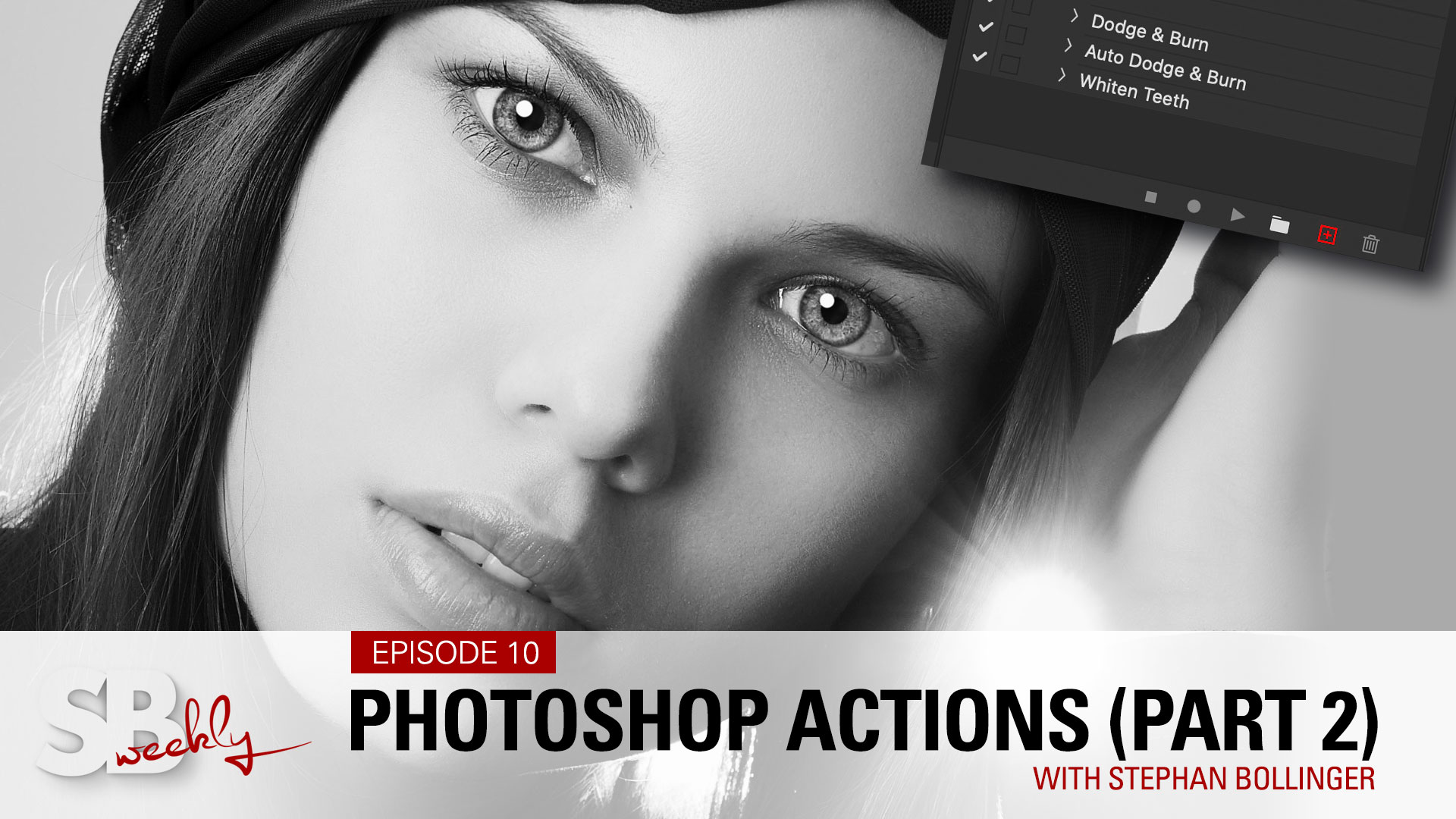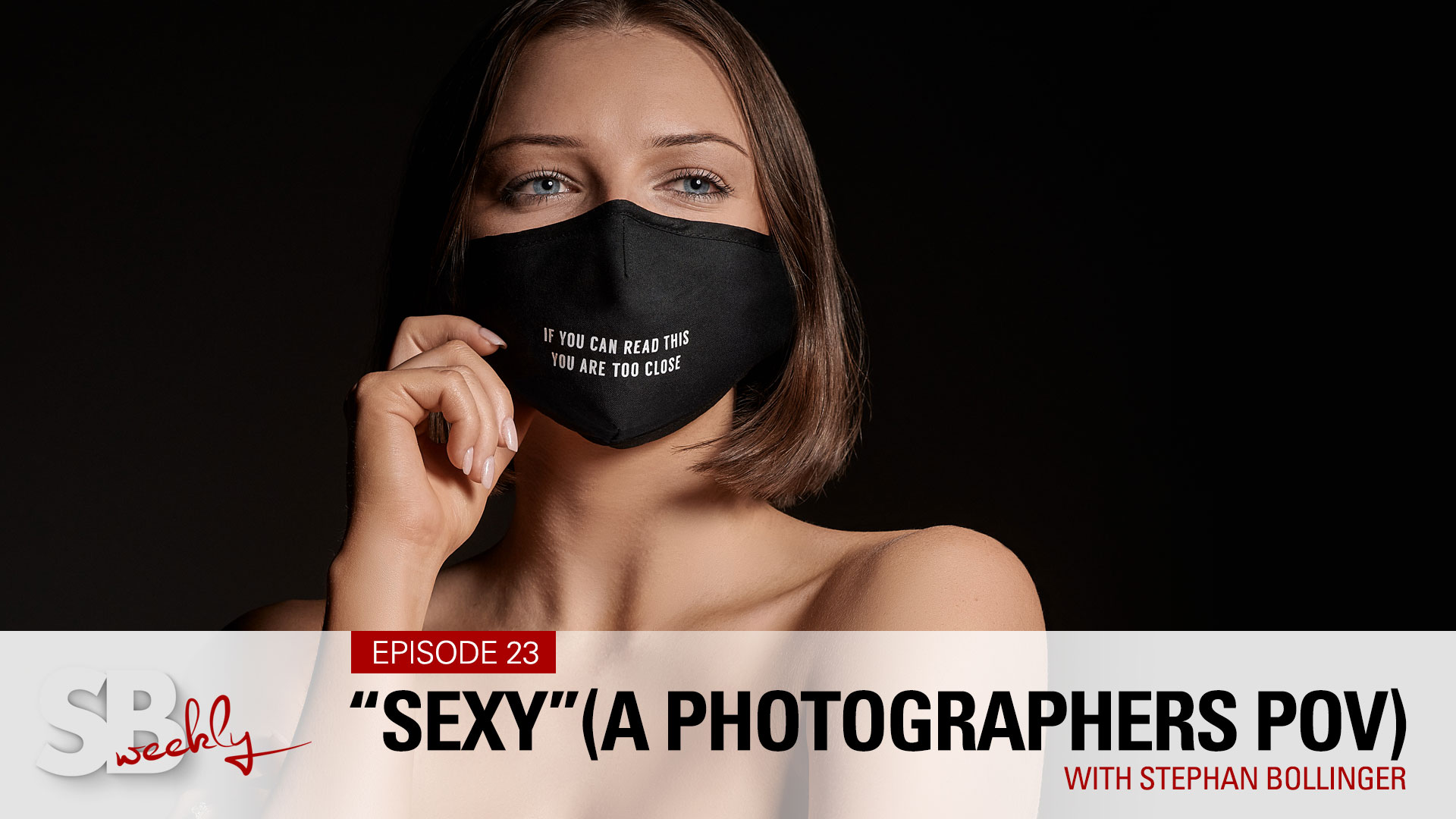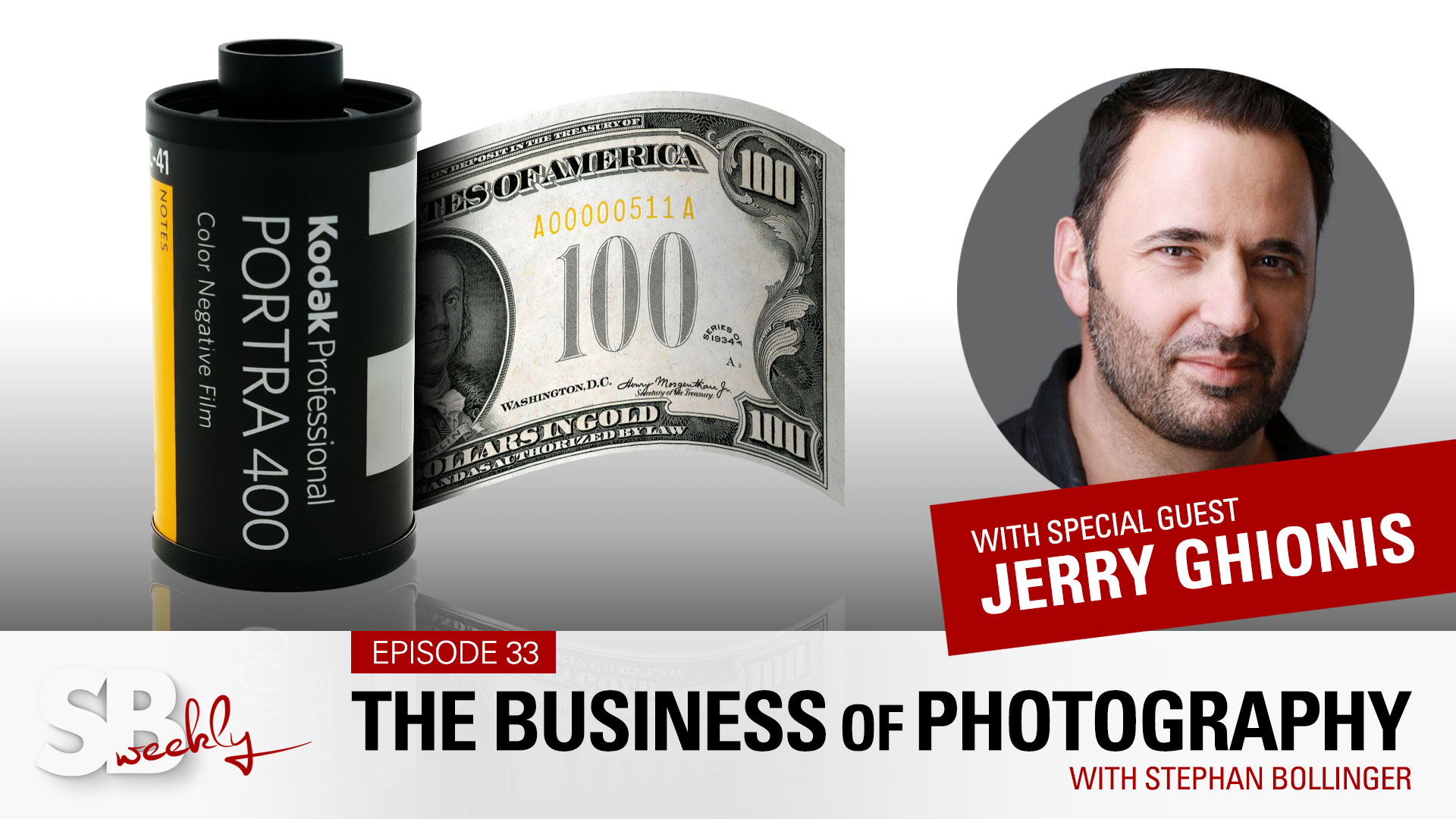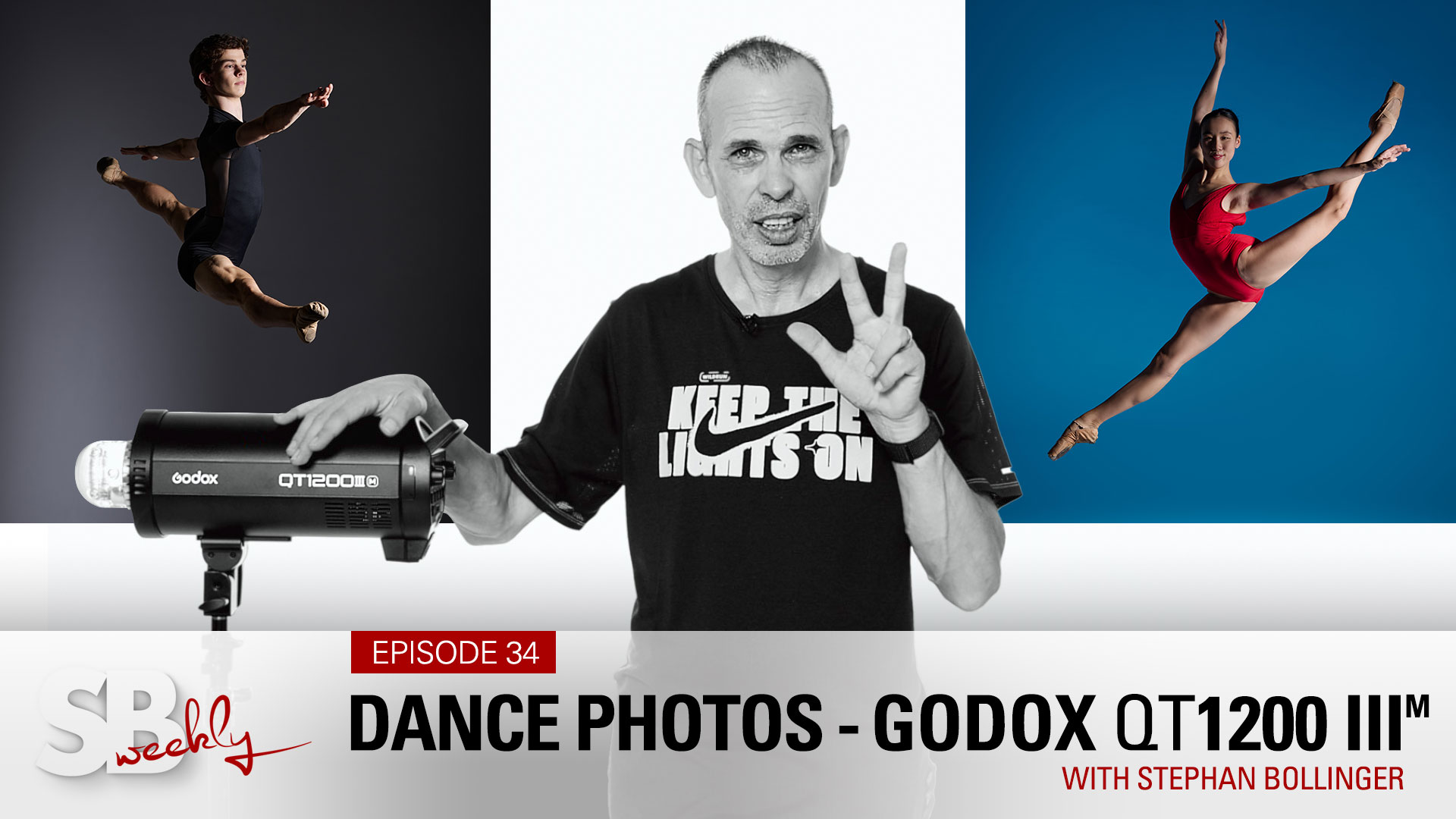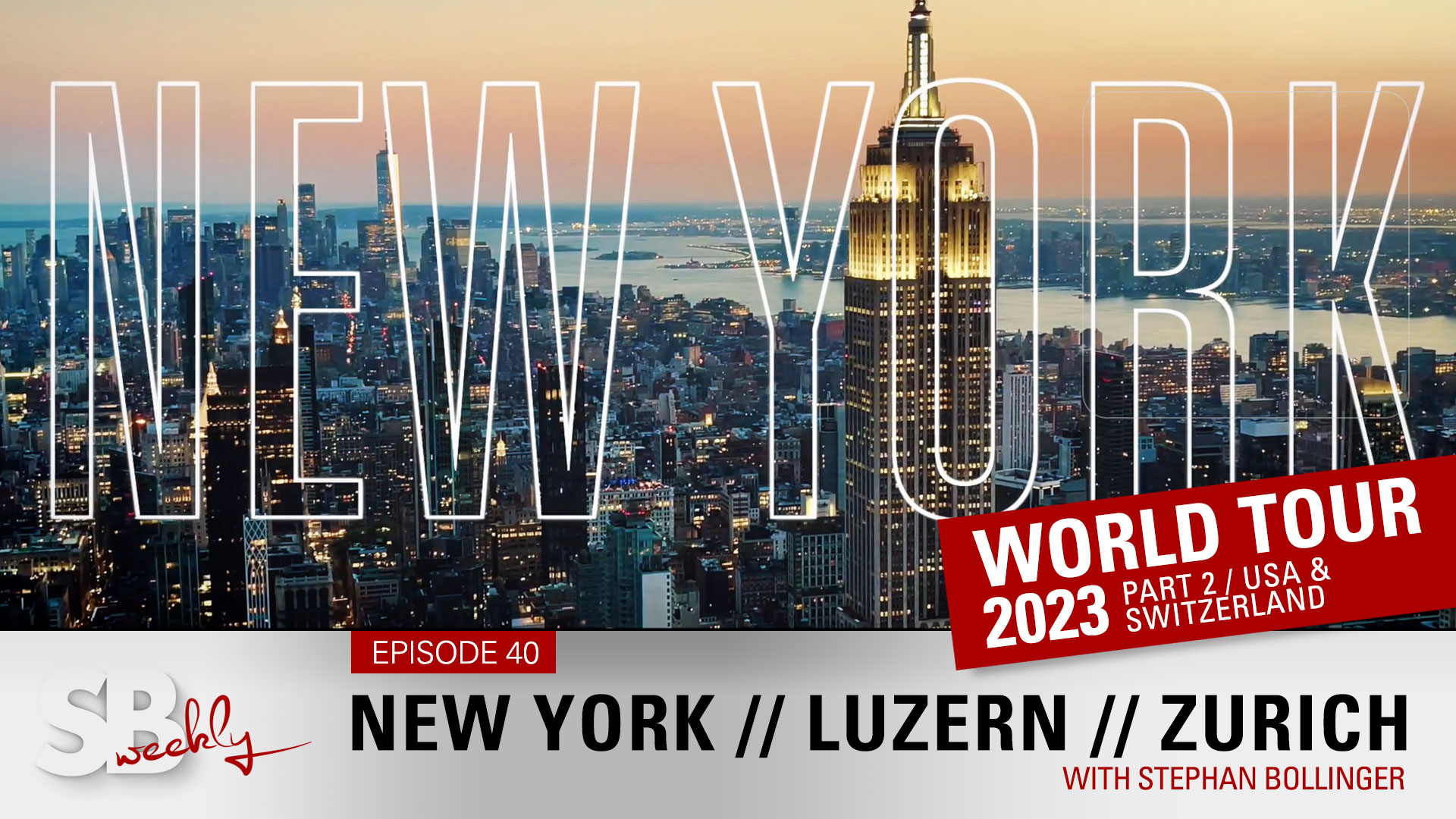Episode 3 - Lens Compression (Myth or Reality)
SBweekly.tv - Episode 2
Lens Compression - Myth or Reality?
Let's find out if the often discussed "Lens Compression" actually exists.
Hey, I'm Stephan Bollinger. I hope you're doing well. Let's talk about this thing, this "lens compression" thing. As you can see behind me, I build a little build a little bit of a kaboozle, and we want to explore this theory of lens compression. Now the theory goes that portraits look the best when shot with a longer lens. Why is this? Instead of just guess working, let's try it out.
I've set up this frame here, a little podium here for our supermodel, and several lights. And we'll just find out what happens when we shoot our supermodel with different lenses. So here she is, very, very patient. We give her a little bit of a Justin Beaver haircut might need to be styled a little bit. But let's dive in.
To understand what's going on a little bit easier I created this little graph. Here we have our supermodel dummy here with the frame. And about 3.5 meters behind we have this mannequin that plays the intruder. And then we put our camera on a tripod, use different lenses, and try to fit the frame according to the lens that we use.
The first one is the 20mm lens. We can see that there is quite a bit of distortion in terms of the proportion of the face. The nose seems extremely long, the distance from the nose to the eyes to the ears looks very unflattering.
Going to the 50mm lens, it's already a lot better for our dummy. The proportions start to become a little bit more flattering. Going to the 85mm, it's even better. Going to the 105mm, I think now the proportions are pretty much spot on. And, my personal preference, the 200mm, I think that is ideal. Somewhere between the 105 and the 200, that's about the sweet spot to create the most flattering proportions for a face.
If we go back to our chart and take a few measurements, with the 20mm we were about 47 centimetres. With the 50 at 117cm. The 85 was at 1.90m. The 105 was at 2.42m. And at 200mm we were 4m away from our frame.
Now before we go and talk about lens compression, what happens to our intruding model? Let's switch the drama on a little bit, shall we? Let's switch the lights off, then add a little bit of blue backlight, a warm hint of sidelight for our intruder, a warm glow for our main subject, and, of course, the key light. Doesn't look too bad. So let's have a look at this, how that looks in 20mm. Ooh, the drama is gone and the mannequin looks far, far away. At 50mm, she comes a little bit closer. At 85mm, she's much closer, 105mm, she's starting to really creep in. And at 200, she's right there.
So, why is this?
All this happens depending on the distance to the subject and the proportions in percentage. So if we look at the 20mm and the facial distortion that we saw, we measure about 46 - 47 centimetres from the camera to the frame. Then the distance from the tip of the nose to the ear is another 10 centimetres. That is a whopping 18% of our distance. So if we now go from the 20mm to the 200mm lens, the 10 centimetres difference between the tip of the nose and the ears is only 0.9%, which creates that much, much more flattering picture.
This doesn't, however, explain why our mannequin in the back is creeping up, so let's have a look at that. To do maths a little bit easier, I pushed the model a little bit further back to about the 4-meter mark. So as a starting point, let's put the camera to 1 meter and let's assume that that fills our frame just perfectly. So at 1 meter, the size of our headshot is 100%. At the same time the mannequin being 4 meters behind, that means she's 5 meters from the camera, she's also at 100%.
What happens if we now double the distance from our camera to our main subject? So we go from 1 meter to 2 meters. By doubling the distance to our subject, our subject within the frame will now be 50%, half the size. However, moving the camera 1 meter back, it might have doubled the distance to the subject but it has not doubled the distance to the mannequin in the back. As a matter of fact, it is only 120% further back than it was before, as we're now talking about 6m versus 5m before. This, in turn, means that while our main subject has shrunk to half the size, our mannequin in the back has only shrunk to 80%. Now as we change our lens or zoom in so that our main subject appears to be full height again, at the same time, the mannequin in the back seems to grow since we have that big difference between 50% and 80%.
If we go from two meters to four meters with our camera, we have now doubled the distance to our main subject again, which mean our main subject is now only 25%, a quarter of the original size. While the distance to the dummy, now at 8m, coming from 5m, is only 160%, not 400%, as it is from the camera to our main subject. I think you get the idea. At the end of the day, it's all about proportions.
As a conclusion, it's not about the lens, it's about the distance and the relationships between the camera, the subject, and the background. So if you would frame a portrait with a 200mm lens and you are three, four meters away, if you shoot from the same distance with a 50mm as an example, and you zoom in in Lightroom or in Photoshop, you'll be surprised. You get exactly the same effect. It is the distance to the subject and not the lens itself that does this compression.
Of course, the background changes, as we've seen. And that can be annoying or it could be a stylish element. So maybe you wanna play with this. At the end of the day, it's all a question of taste anyway.
Well, I hope that was a little bit helpful. And I see you again next week.

SBweekly.tv is all about sharing ideas, experiences, knowledge, creativity and inspiration. Mostly geared towards beginning and enthusiast photographers, we cover a wide range of topics, from photography and retouching to video & sound production, sprinkled in with a few travel stories and conversations with fellow creatives.
All is paid for. But you can still help…
Every like, follow, and comment on YouTube helps! We'd greatly appreciate if you'd take the time to jump over, and click a few buttons. Even better if you'd share our videos with others - or - the entire playlist, why not! Here is the magic link…
PS: We take copyrights seriously. All the music we use is licensed from www.artlist.io
FOLLOW & SAY HELLO…
YOUTUBE CHANNEL || PORTFOLIO || INSTAGRAM
© COPYRIGHT BY STEPHAN BOLLINGER. ALL RIGHTS RESERVED










